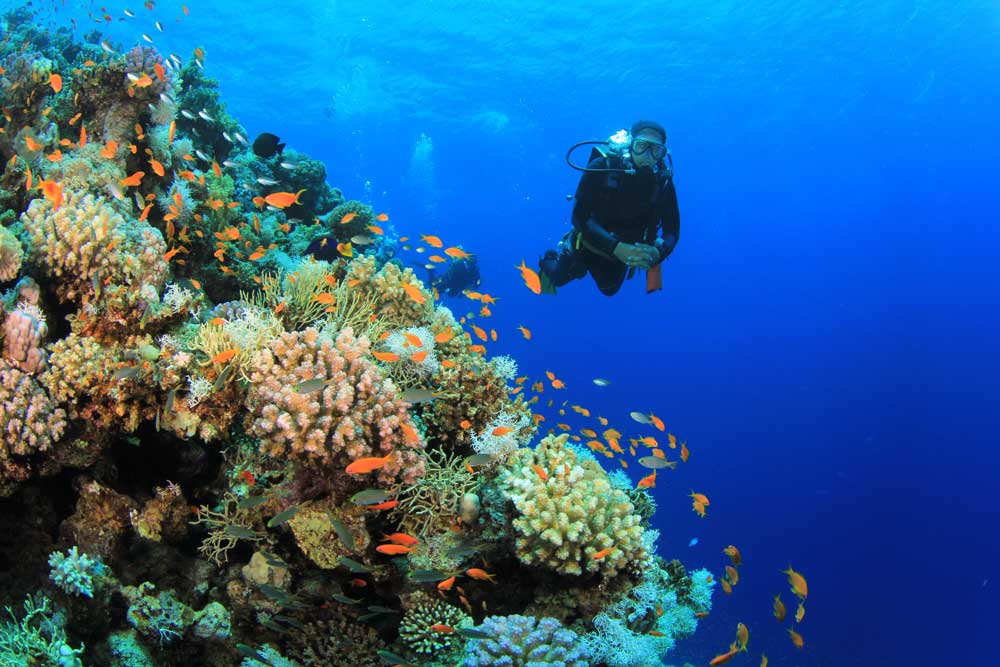
Experience the Depths: Philippines Liveaboard Diving
Nearby, Apo Island near Dumaguete presents vibrant coral dives. Additional diving gems include the WWII wrecks in Coron, muck diving in Puerto Galera, and whale shark spots in Donsol. The Philippines promises unforgettable underwater adventures for divers across the board.
About Philippines Liveaboard Diving
The Philippines offers a mosaic of diving experiences, from pelagic interactions to wreck explorations. Each destination has its unique charm and story, making the Philippines a must-visit for every diving enthusiast.
At the heart of the Philippines underwater haven lies Malapascua, an island to the north of Cebu. Malapascua is easily reachable from Cebu City with a 3-4 hour drive followed by a brief 30-minute boat ride. Diving in Malapascua is world-renowned for its thresher shark sightings at dive sites like Monad Shoal, one of the only places in the world where spotting thresher sharks is a sure thing. Of course, other marine life such as Manta Rays are easily seen here. Gato Island, another diving gem in the vicinity, serves as a reserve for white-tip sharks and seahorses.
From June through December, Malapascua 's water temperature is a pleasant 27-30 degrees Celsius and the visibility is at its highest.
The Visayas
The Visayas are great for diving any time of the year, though some liveaboards won't offer trips there while they're at Tubbataha
Close to Dumaguete in the Visayas, Apo Island offers another layer of diving allure. The island, a 30-minute boat journey from Dumaguete, showcases dive sites like Chapel, known for vibrant corals, and Coconut, preferred for drift diving due to its strong currents.
A real jewel of the Philippines, however, is the Tubbataha Reefs Natural Park, majestically residing in the Sulu Sea. Access to this UNESCO World Heritage Site, with dive spots like the Apo Reef and Jessie Beazley Reef, is exclusive to liveaboards departing from Puerto Princesa, Palawan
Beyond these primary dive havens, the Philippines also hosts other noteworthy sites. Coron Puerto Galera , on Mindoro Island, attracts with muck diving sites and historic wrecks, while Donsol in the Bicol region becomes a hotspot for whale shark interactions, especially between November and June.
When To Go?
Because of its tropical temperature and wide coastline, the Philippines is an excellent diving destination any time of the year. However, the dry season (November–May) is typically the greatest time to go scuba diving in the Philippines. The weather is more stable and less likely to produce sudden storms during these months, and the seas are more peaceful and the visibility greater.
Warmer waters and better skies can be expected from March to May, but this is also the hottest time of year, when the most visitors come. However, the weather is more agreeable for divers, both underwater and on the surface, from December to February.
Dive sites can still be visited throughout the rainy season (June–October), despite the increased likelihood of rain and typhoons. Between March and June, when the marine park is open, diving conditions at sites like Tubbataha Reefs are at their optimum.
Tips For Travelers
The Philippine peso (PHP), or 'piso' in Filipino, is the official currency of the Philippines.
English is a widely spoken language in the Philippines. Travelers rarely experience difficulties in communication.
Although the Philippines is largely safe, do research the No-Go areas of the country.
Ensure you have insurance that covers diving-related incidents. Liveaboard diving in the Philippines can bring you to remote areas from where rescue can be challenging.
How to get there & Ports of Departure?
Cebu City is where the majority of liveaboards to the Visayas, including Malapascua, set off from. From Manila, a flight to Cebu City takes about 2 hours.
Most Tubbataha liveaboards set off from Puerto Princesa, the capital city of Palawan. There are regular flights to Puerto Princesa from both Manila and Cebu City. The two preferred options for air travel in the Philippines are Cebu Pacific and Philippines Airlines. Many countries in Southeast Asia have direct flights to either Manila or Cebu City. Numerous international flights stop in the region first before continuing on to the Philippines.
Essential Travel Tips for Liveaboard Adventures
- Marine Park Fees: Be aware of per person, per day marine park fees. Some liveaboard packages include these fees, while others require onboard payment. Payment options include Visa, Mastercard, cash, or travelers checks.
- Passport Validity: Ensure your passport is valid for at least 6 months after your planned entry date. Most countries require this, along with a return ticket. Check visa requirements in advance.
- Health Preparations: Consult your doctor 8 weeks prior to your trip for vaccinations or preventive measures recommended for your destination.
Note: Please review the specific terms and conditions of your chosen liveaboard for any additional marine park fees or travel requirements.
We're Here to Help 24/7






